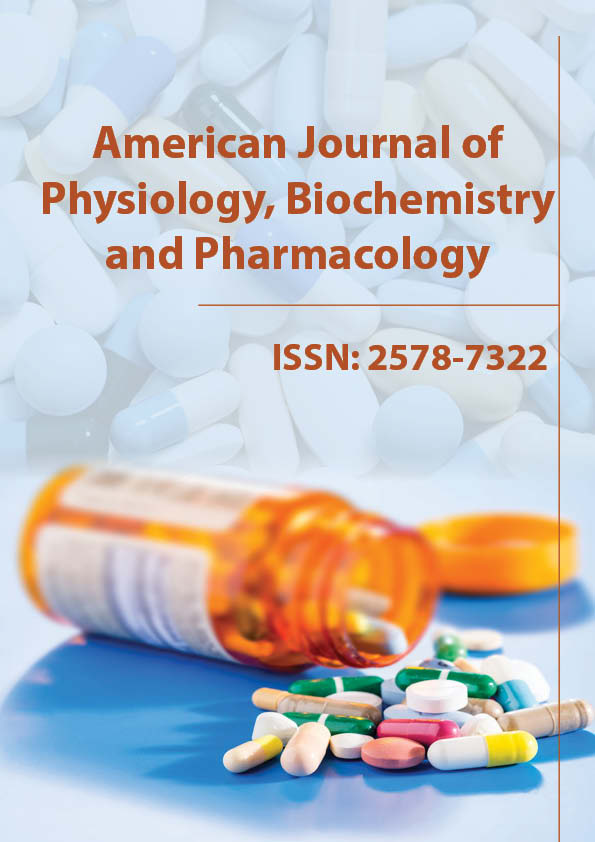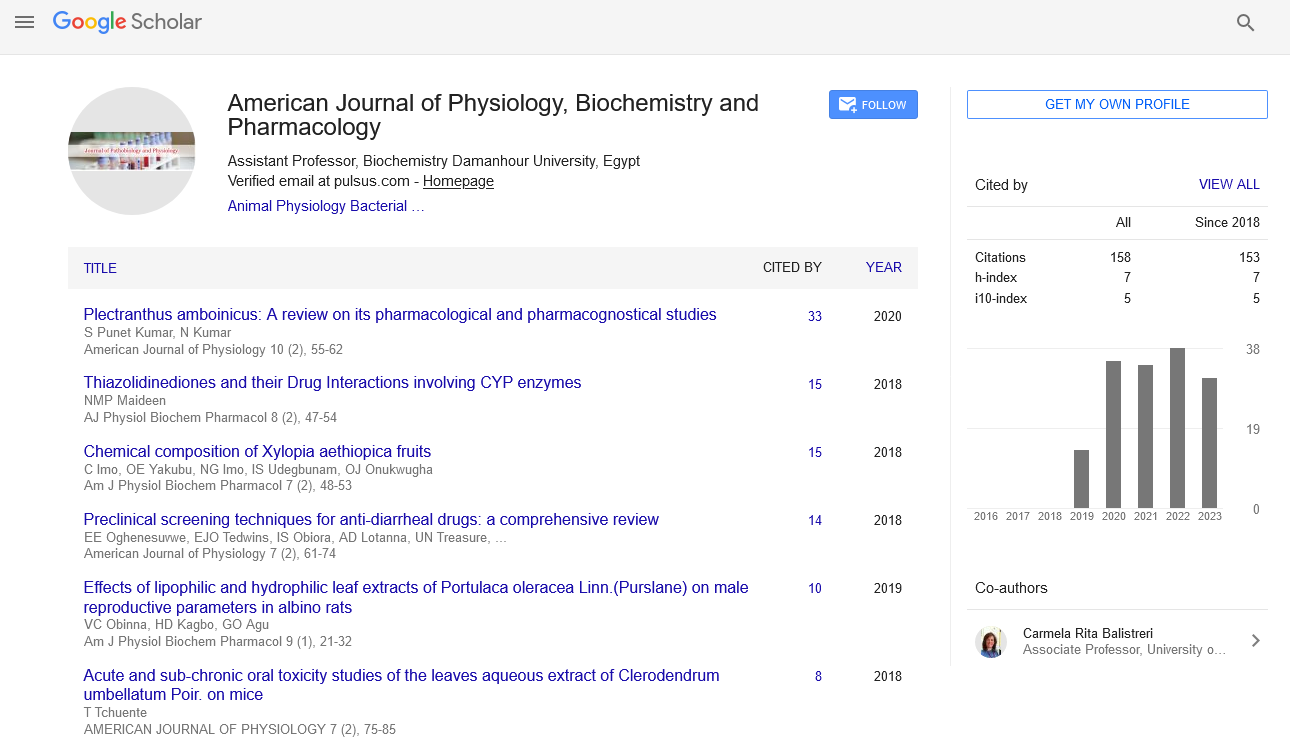Editorial - American Journal of Physiology, Biochemistry and Pharmacology (2021)
Identification of SARS-COV-2 Exhibited Outcomes were Clearly Indicating Spike in Glycoprotein
Joshua Karegg*Joshua Karegg, Department of Chemsitry, Wichita State University, United States, Email: jkaregg@wsu.edu
Received: 07-Jul-2021 Published: 28-Jul-2021
Editorial
The SARS-COV-2 infection (COVID-19) is brought about by the corona virus, an infection that can enter have cells by utilizing its spike glycoprotein to tie with the angiotensin-changing over catalyst 2 (ACE2) receptor broadly circulated in tissues and organs.
Secondly, the result are disappointing in serious instances of the illnesses and it is not evident whether there is a differential bio appropriation and organ take-up in sound youthful people normally giving asymptomatic or moderate COVID-19 side effects.
Besides, for counter acting agent medicines and antibodies that focus on the spike glycoprotein, it is indistinct whether these decrease SARS-CoV-2 or spike glycoprotein multi-organ tropism similarly. This is fairly significant, as mRNA antibodies discharge made an interpretation of spike protein into interstitial liquid and blood, which is circulated to a plenty of organs to trigger a resistant reaction.
This is the main driving force behind why an exploration gathering of University of Arkansas in the province of USA, chosen to investigate SARS-CoV-2 bio appropriation energy and multi-organ tropism to find more definitive solutions.
In this investigation, the scientists have used the receptor- restricting space (RBD) of the spike glycoprotein as a SARS-CoV-2 viral substitute to evaluate its profile dissemination and end in lab mice basically because of the way that RBD structure has a critical job for viral passage into have cells.
At last, ex vivo organ spike glycoprotein circulation examinations were likewise sought after toward the finish of investigations to more readily comprehend which organ was for the most part connected with SARS-CoV-2 spread. All the more explicitly, organs like lungs, liver, mind, lungs, spleen, kidneys and digestion tracts were taken out, washed and imaged – similar to in vivo imaging approach.
To put it plainly, this examination has discovered a spike glycoprotein body-wide bio conveyance which was trailed by a sluggish provincial disposal in 2-3 months old male mice, aside from the liver, which really showed a development of this biomarker.
Additionally, spike glycoprotein take-up was generally bountiful in the lungs, trailed by kidney, heart and liver. Strangely, it was not distinguished in the useful tissue of the cerebrum (i.e., mind parenchyma) or cerebrospinal liquid.
All in all, vascular obstructions of the mind were effective in confining the section of spike glycoprotein into cerebrum parenchyma in youthful, sound mice. While both enemy of ACE2 and against spike antibodies showed suppressive characteristics, the last was more successful in ending spike glycoprotein bio dissemination and organ take-up.
This examination has shown how differential spike glycoprotein organ take-up is fundamentally controlled by ACE2 levels; extra exploration tries are required in more established mice and furthermore in occurrences when foundational irritation is available.
In a roundabout way, by demonstrating the conduct of SARS-CoV-2 in a host, this investigation affirms that antibodies guided against the spike glycoprotein are a strong decision for killing viral tissue conveyance and limiting the seriousness of this inescapable disease.
Acknowledgements
None.
Conflict of Interest
The authors declare that they have no conflict of interest.
Funding
None.






